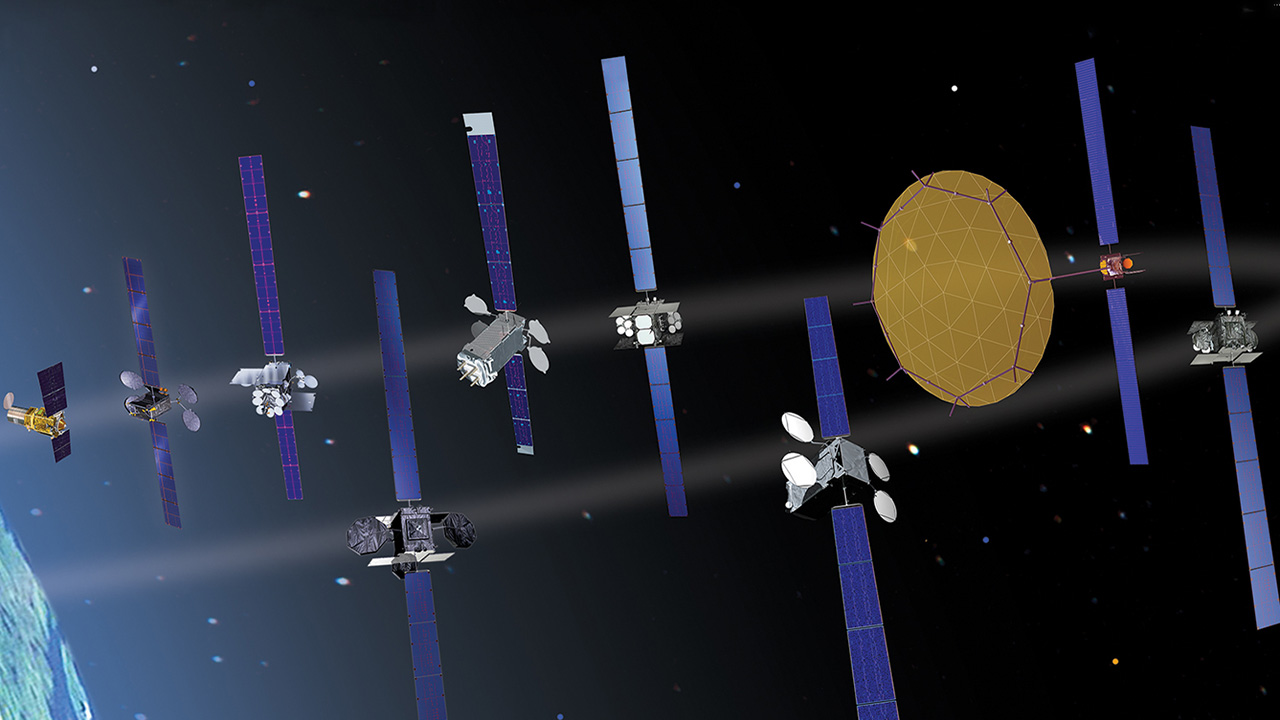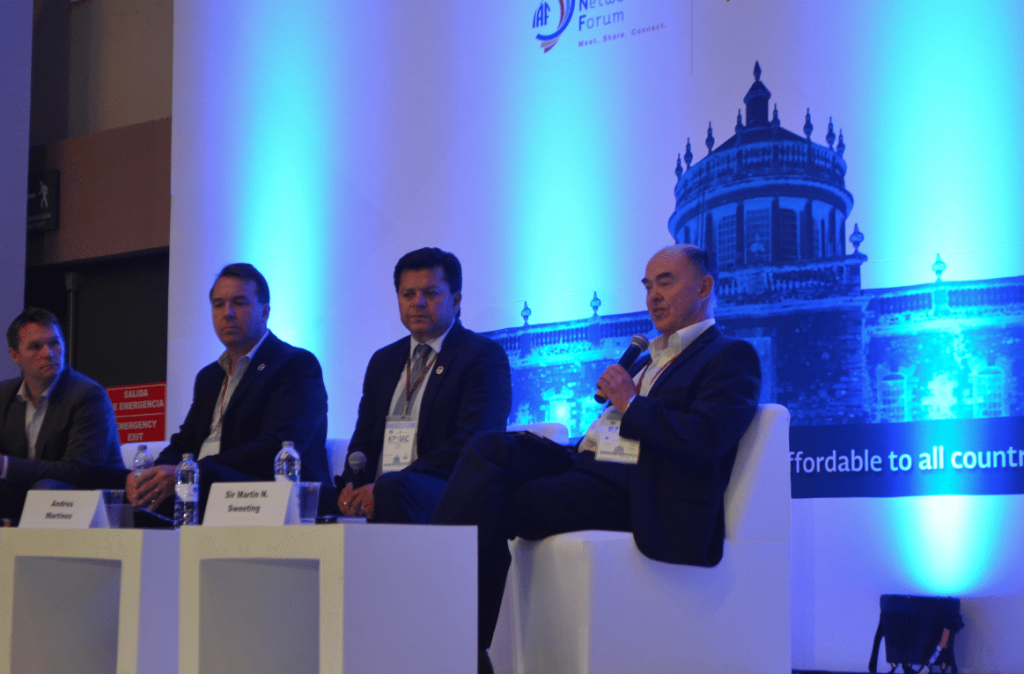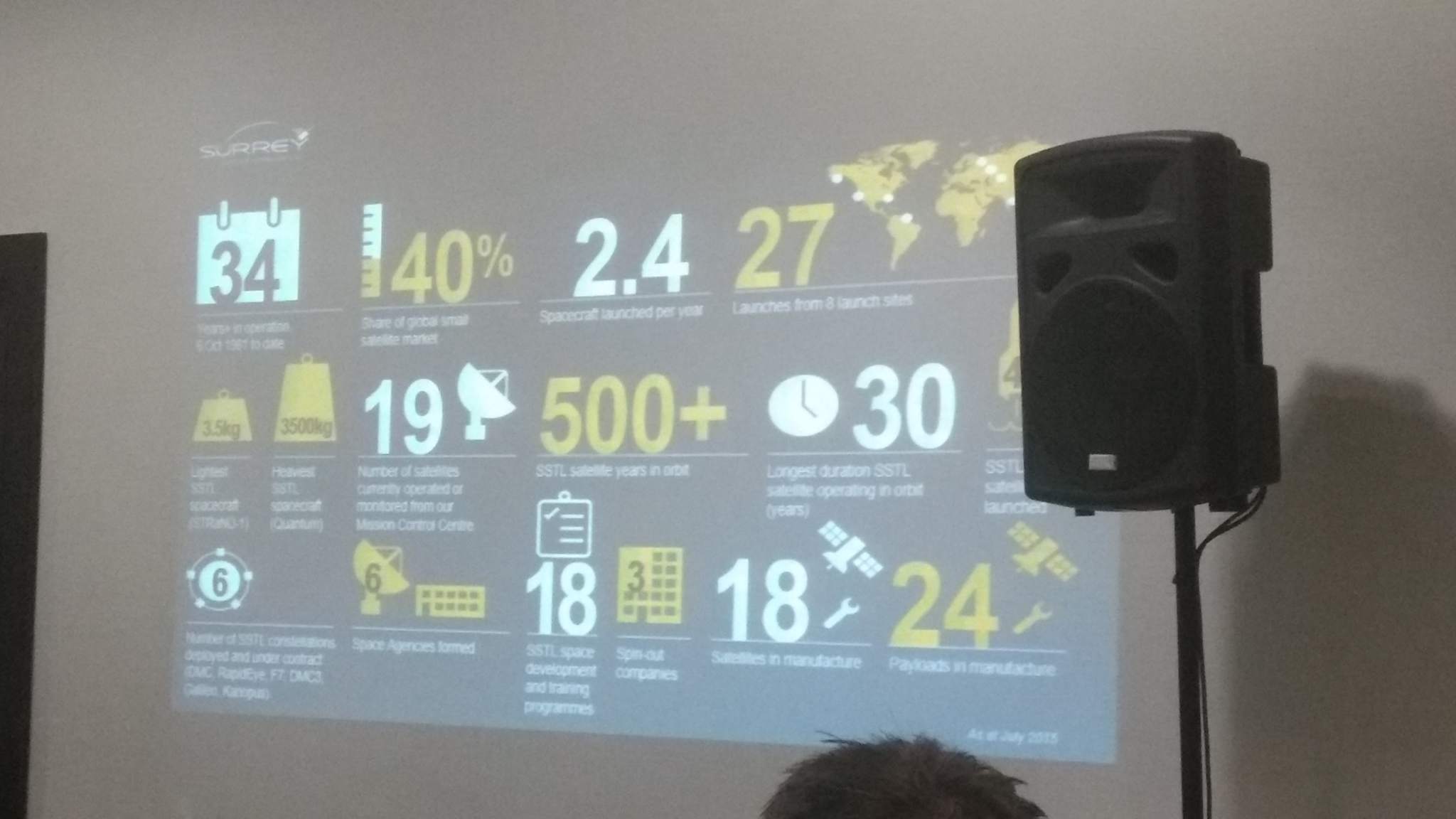Surrey Satellite Technology believe 3D printing is changing the economics of space. Chris Hamar, Chief Composites Engineer at Surrey Satellite Technology Limited (SSTL), discussed the use of 3D printing at the company during the 2017 edition of Defence IQ’s Additive Manufacturing for Aerospace, Defence and Space (AMADS).
3D Printing Industry was in attendance at the 4th edition of AMADS in West London, where the record numbers in attendance were testament to increasing application of 3D printing to these sectors. Among the delegates were notable attendees from Airbus, GE, BAE Systems and NASA.

Hamar’s talk was titled ‘The Changing the Economics of Space’ and we’ve seen several companies approaching 3D printing for satellite production recently. This week Boeing announced they will begin incorporating the technology into their satellite manufacturing processes. While Polish company SatRevolution unveiled plans to build a 3D printing satellite production facility.

Surrey Satellite Technology Limited
The company was spun-out of the University of Surrey, UK in 1985 and has been delivering small satellite missions for over 30 years. This, they state, is longer than any other company in the world. SSTL currently have 500-550 employees spanning a number of different countries. Hamar noting that while this may seem small, they have, “a good amount of heritage behind what we do.”

According to Hamar, SSTL has a satellite currently in orbit that has been there for 30 years. They launch 2.4 satellites per year, with their smallest satellite being just 3.5 kg (7.7lb). The British company uses 3D printing to produce a number of mission critical parts and have five spacecraft currently in orbit made using additive manufacturing. However, as Hamar explains, while 3D printing brings many possibilities for manufacturing satellites, it is not always applicable.

Why don’t SSTL 3D print all their satellites?
Hamar explains that additive manufacturing for full production is not quite there – yet. While the technology permits fabrication of parts that would otherwise be impossible, it can be expensive and difficult to do so. In order to implement additive manufacturing correctly, it needs to be pursued only where it will be inherently beneficial.
According to Chris Hamar, for 3D printing to continue changing the economics of space, acceptance and certification is the biggest obstacle. This idea has been a theme for the conference as NASA’s Dr. Raymond Clinton also cited the certification process as a main hurdle for additive manufacturing as a technology. However, such a barrier will be overcome with time and perhaps more importantly if an industry wide effort focuses on this task. Indeed, during a panel featuring GE, BAE Systems, Airbus and RUAG industry wide collaboration was a much mooted point. Furthermore, away from the presentations many discussions around the high standards AM is held, compared to traditional foundry techniques, were conducted
Concluding his talk, Hamar said that the process for change has already started.
Sign up to our newsletter for the latest 3D printing news and make sure to follow us on twitter and Facebook for instant updates.
Featured image shows SSTL’s Assembly, Integration and Test Hall. Photo via Surrey Satellite Technology Limited.



